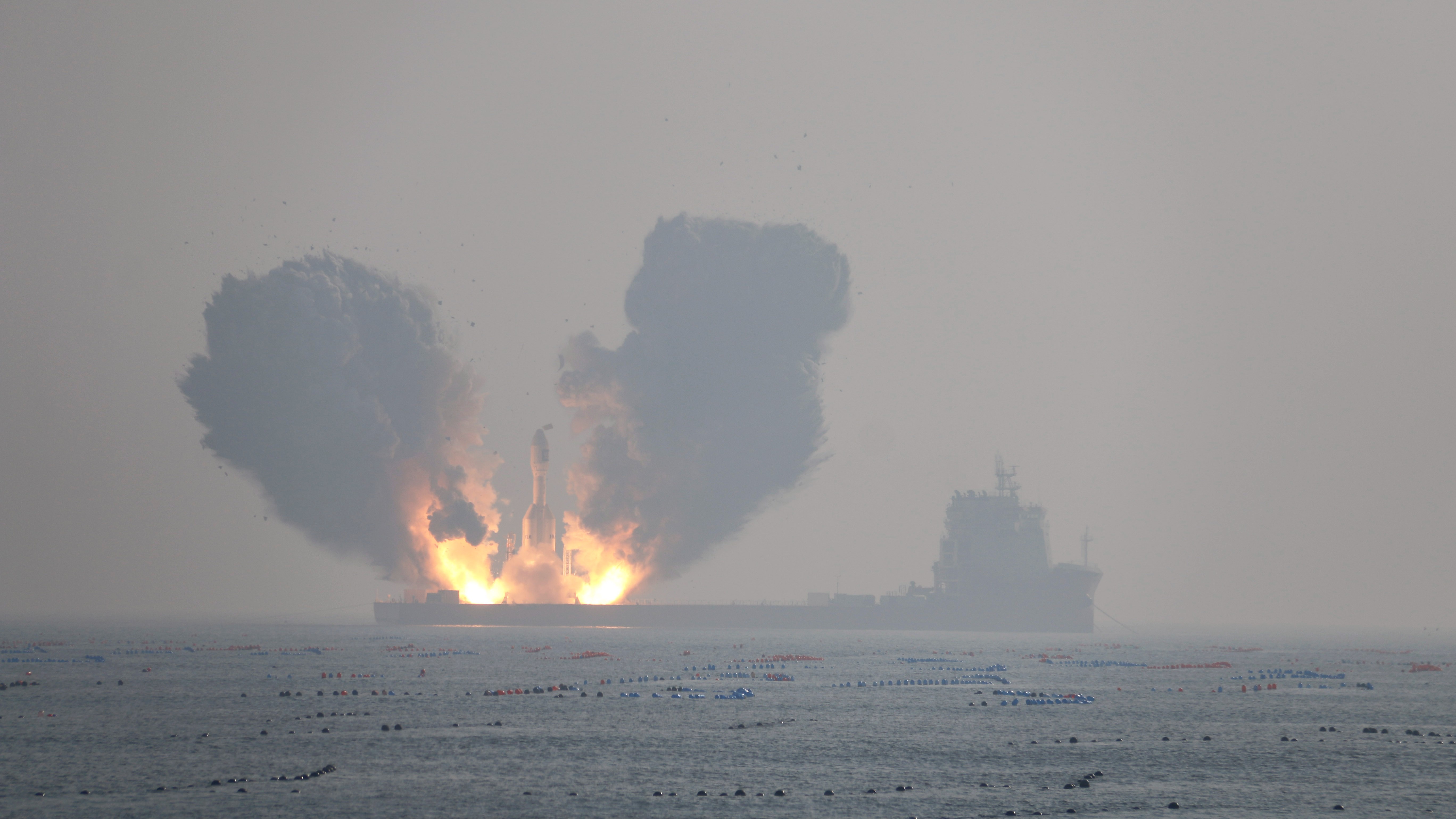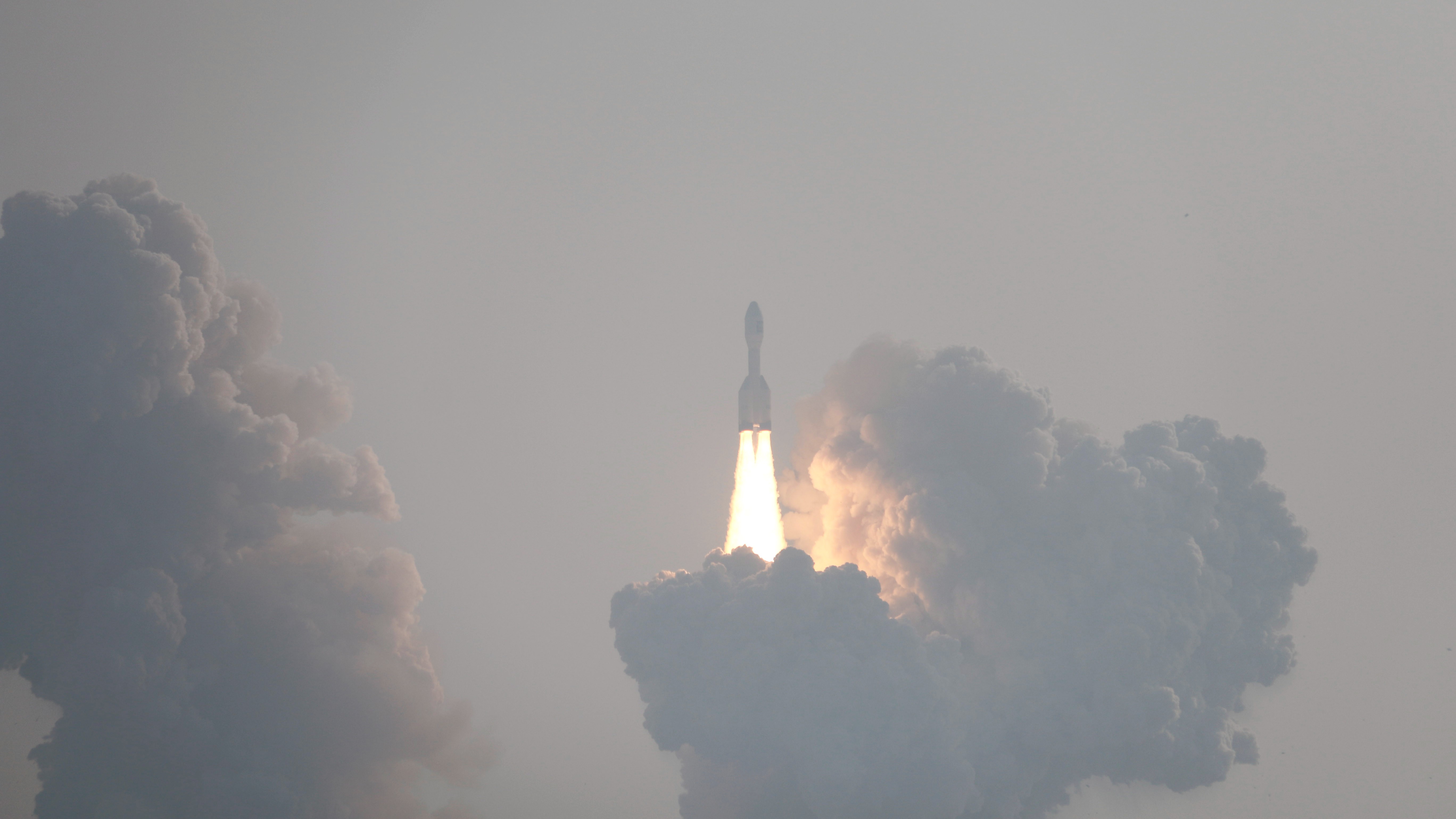China's record-breaking Gravity-1 rocket aces amazing debut launch from ship at sea (video)
A new Chinese rocket just blasted its way into the record books.
The Gravity-1 vehicle, built by Chinese company Orienspace, lifted off for the first time ever Thursday (Jan. 11). The squat, burly rocket rose off the deck of a ship stationed in the Yellow Sea at 12:30 a.m. EST (0530 GMT), sending two big plumes of exhaust, and some impressively large pieces of debris, into a blue sky.
Gravity-1 deployed its payloads — three Yunyao-1 commercial weather satellites — into their planned orbit, according to Orienspace, which declared the debut launch a success.
Gravity-1 can haul about 14,300 pounds (6,500 kilograms) of payload to low Earth orbit (LEO), SpaceNews' Andrew Jones reported. Today's liftoff made it the most powerful Chinese commercial rocket, as well as the most powerful solid-fueled launcher, ever to ace an orbital mission.
Related: China's Long March rocket family: History and photos
Gravity-1 will be just one of the rockets in Orienspace's stable, if all goes according to plan.
The company is also developing a vehicle called Gravity-2, which will feature a liquid-fueled core stage and solid rocket boosters. Orienspace is targeting a 2025 debut for Gravity-2, which will likely be capable of lofting 25.6 tons to LEO, according to Jones.
Breaking space news, the latest updates on rocket launches, skywatching events and more!
Then there's Gravity-3, which will combine three Gravity-2 core stages, much as SpaceX's Falcon Heavy features three strapped-together Falcon 9 boosters, Jones wrote. Gravity-3's payload capacity to LEO is projected to be about 30.6 tons.
For comparison: The Falcon 9 and Falcon Heavy can haul about 25 tons and 70 tons to LEO, respectively, according to their SpaceX specifications pages.
Today's Galaxy-1 launch was the fourth orbital mission of the year for China. The nation has ramped up its launch cadence to impressive levels recently, with the private sector playing an increasingly important role.
China launched 64 orbital missions in 2022, then broke that national record with 67 in 2023.

Michael Wall is a Senior Space Writer with Space.com and joined the team in 2010. He primarily covers exoplanets, spaceflight and military space, but has been known to dabble in the space art beat. His book about the search for alien life, "Out There," was published on Nov. 13, 2018. Before becoming a science writer, Michael worked as a herpetologist and wildlife biologist. He has a Ph.D. in evolutionary biology from the University of Sydney, Australia, a bachelor's degree from the University of Arizona, and a graduate certificate in science writing from the University of California, Santa Cruz. To find out what his latest project is, you can follow Michael on Twitter.


